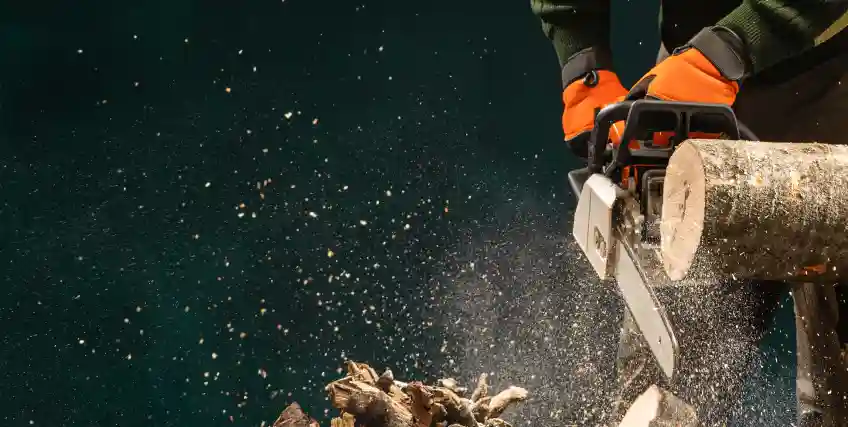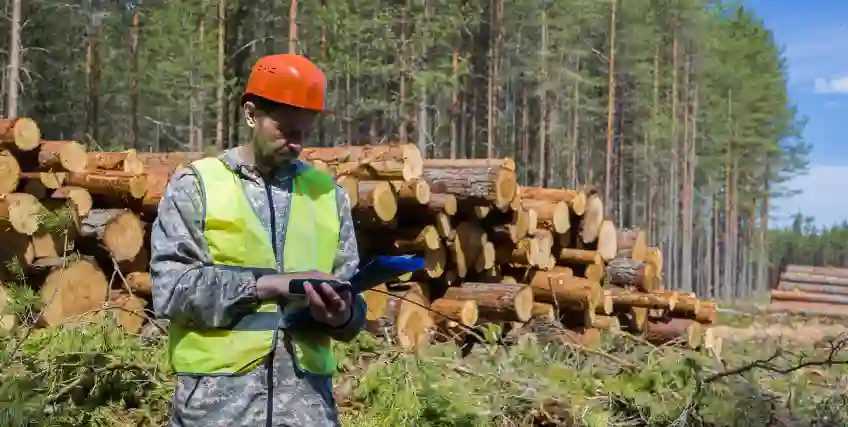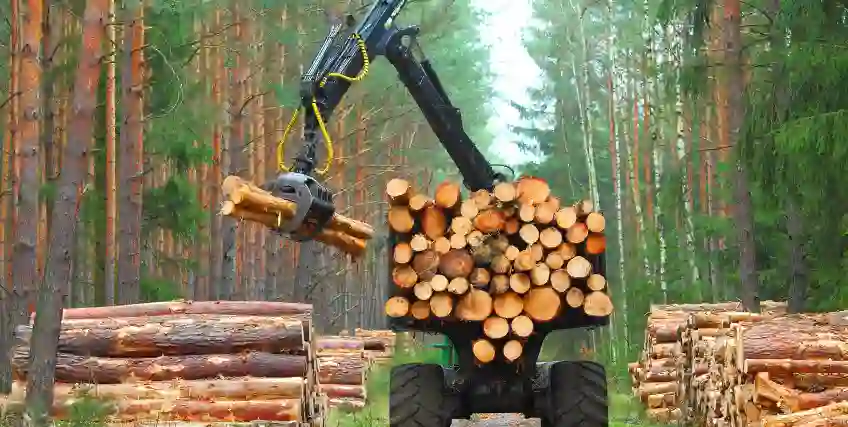Forestry Equipment Financing: Grants, Loans & Leasing for 2025
Jul 24, 2025 | Last Updated on: Jul 28, 2025

Finding money to run or grow a forestry business isn’t easy. The costs add up fast, including money to buy land and heavy equipment or pay for day‑to‑day expenses. Your cash flow might feel solid one month and tight the next. In 2025, there are new grants and loan programs alongside familiar financing options that can help you move forward without draining every dollar you’ve saved. Knowing where to look can save you time and frustration. Many owners are focused on financing for forestry equipment because that’s often the biggest expense. Learn how the right mix of loans, leasing, and other financing options can help your business grow.
New Programs and Grants in 2025
Here are the latest financing for forestry equipment options that include loan programs and grants:
Forest Legacy Program
The Forest Legacy Program by the U.S. Forest Service helps private landowners sell conservation easements or even forestland while still keeping it in production. You must apply for this grant through your state forestry office. While not every project is accepted, if you own significant acreage, it’s worth exploring.
Timber Production Expansion Guaranteed Loan Program
If you’re running a sawmill or a processing plant within 250 miles of certain restoration areas, this USDA‑backed financing for forestry equipment program is worth a look. The Timber Production Expansion Guaranteed Loan Program (TPEP) guarantees up to 90% of a loan as large as $25 million. Keep in mind that this loan program funds projects for growth, like new equipment or facility upgrades, rather than refinancing old debt.
Wood Products Infrastructure Assistance
The Wood Products Infrastructure Assistance program through the U.S. Forest Service provides grants for businesses that process wood byproducts or improve infrastructure tied to forest work. To get approved for these grants, you'll need to show how the funding will increase capacity or efficiency.
Forest Restoration and Wildfire Risk Mitigation Grants
For forestry businesses located in Colorado or nearby, grants from the Colorado State Forest Service can cover 75% of the costs for fuel reduction or similar projects. If wildfire mitigation ties into your services, these Forest Restoration and Wildfire Risk Mitigation Grants can be a practical way to fund part of the work.
National Forest Foundation Collaborative Capacity Grants
The National Forest Foundation Collaborative Capacity Grants range up to $75,000 and are aimed at building partnerships that improve forest management. Mini grants of up to $10,000 are also available for smaller projects. For example, small forestry operations could join forces with local organizations to get one of these grants, and then invest in loaders or log trucks to expand their services.
Traditional Loan Options
Grants are great if you can get them, but they’re competitive. Most businesses in the logging industry rely on business loans from lenders they trust. Here are a few financing for forestry equipment options to consider when you need to borrow money.
USDA Farm Service Agency Loans
The U.S. Department of Agriculture offers a variety of loan programs to help forestry businesses. Operating loans cover expenses such as fuel, payroll, and smaller equipment purchases. Ownership loans help you buy land or make improvements. Microloans typically start at around $50,000, direct loans can reach up to $400,000, and guaranteed loans can be higher. If you’re buying used equipment, these loans can often work as financing for forestry equipment as long as the machines are in good shape.
SBA Loans
The Small Business Administration (SBA) offers several types of loans based on the purpose and size of your loan. SBA 7(a) loans can reach $5.5 million and are an excellent option for financing for forestry equipment. They can cover things like heavy equipment, sawmills, or even the construction of new facilities. SBA 504 loans are another option if you’re focused on big machines, like skidders, log loaders, or delimbers. The paperwork can seem overwhelming, but many owners say the competitive rates and lower credit requirements are worth the effort.
Term Loans
A term loan gives you a set amount upfront, with a clear repayment schedule and consistent monthly payments. You can use term loans as financing for forestry equipment, such as buying a new harvester or a used log truck. Lenders will require financial statements and a solid credit score. A down payment can make it easier to get approved and will lower your monthly payments.
Business Lines of Credit
If you don’t need a big lump sum, a business line of credit might work better. You borrow only what you need, when you need it, and pay interest on the amount you use. Interest rates are variable, which can cause your payments to increase in a rising rate environment. While a line of credit isn’t ideal for financing for forestry equipment, many loggers keep a line open to handle emergency repairs or seasonal dips in cash flow.
Alternative Financing
Some owners looking for financing for forestry equipment turn to alternative financing when timing is tight or credit history isn’t perfect.
Why Financing for Forestry Equipment is Critical
Your machines determine how much work you can take on. Financing for forestry equipment lets you get what you need, like harvesters, skidders, chippers, and log loaders, without spending all of your cash.
If you’re just starting, startup forestry equipment loans can get you running sooner. Lenders often care about your experience more than your years in business.
Leasing can also make sense. Forestry equipment leasing spreads out costs and keeps cash available for fuel and payroll. Logging equipment leasing is a good fit if you only need a machine for a specific season or want to upgrade frequently.
Financing can also cover upgrades,such as adding a delimber to an existing unit or purchasing technology to make your team more efficient. Some lenders specialize in logging equipment financing for used machines, which can be a smart way to grow without overspending.
With the right equipment financing, you can manage cash flow, stay competitive, and avoid missing opportunities because your equipment isn’t up to the job.
Preparing your finances
- Organize your financial documents. Lenders will ask for profit and loss statements, balance sheets, and cash flow reports. Having these ready speeds up the application process.
- Create a clear business plan. Explain how the financing for forestry equipment will improve revenue or reduce expenses. Show them you know your numbers and your market.
- Review and improve your credit. Look at your credit score and clean up what you can. A better score often means better interest rates and more flexible terms.
- Separate business and personal finances. Keep clean records with a dedicated account. It shows lenders you treat your logging business seriously.
- List your available collateral. Land, vehicles, and heavy equipment can make lenders more comfortable approving larger loans.
- Look for programs that fit your stage of business. If you’re new, focus on lenders that offer startup forestry equipment loans and understand the logging industry.
The Bottom Line About Financing for Forestry Equipment
Not all lenders are the same. Some know the forestry industry well and understand the value of skidders, log trucks, and sawmills. Others treat it like general construction and might not see the big picture. Ask them about their experience with forestry equipment financing and how they handle seasonal income swings.
Compare interest rates, down payment requirements, and monthly payments. But also look at how easy they are to work with. A finance company that understands your world can save you headaches later. Some owners stick with one lender and build a relationship. Others mix solutions, combining a term loan for big equipment purchases with a line of credit for working capital.
Your equipment needs will change over time. Financing for forestry equipment is not a one‑time decision. Review your financing options every so often to make sure they still match your plans.
FAQs About Forestry Equipment Financing
What types of financing are available for forestry equipment?
You can use equipment loans, SBA loans, USDA programs, leasing, business lines of credit, or even grants. The right choice depends on your equipment needs and your cash flow.
Can I get financing for used forestry equipment?
Many lenders offer logging equipment financing for used machines as long as they meet age and condition standards.
How do startup forestry equipment loans work?
These loans are designed for new operations. Lenders will look closely at your experience, credit score, and plan for repayment.
Is forestry equipment leasing better than buying?
Leasing lowers upfront costs and offers flexibility, while buying builds equity. The better choice depends on how long you plan to use the equipment and your budget.
How long does it take to get approved for financing for forestry equipment?
Traditional business loans can take weeks, while some leasing programs or online lenders can approve in just a few days.
Frequent searches leading to this page
Term Loans are made by Itria Ventures LLC or Cross River Bank, Member FDIC. This is not a deposit product. California residents: Itria Ventures LLC is licensed by the Department of Financial Protection and Innovation. Loans are made or arranged pursuant to California Financing Law License # 60DBO-35839




